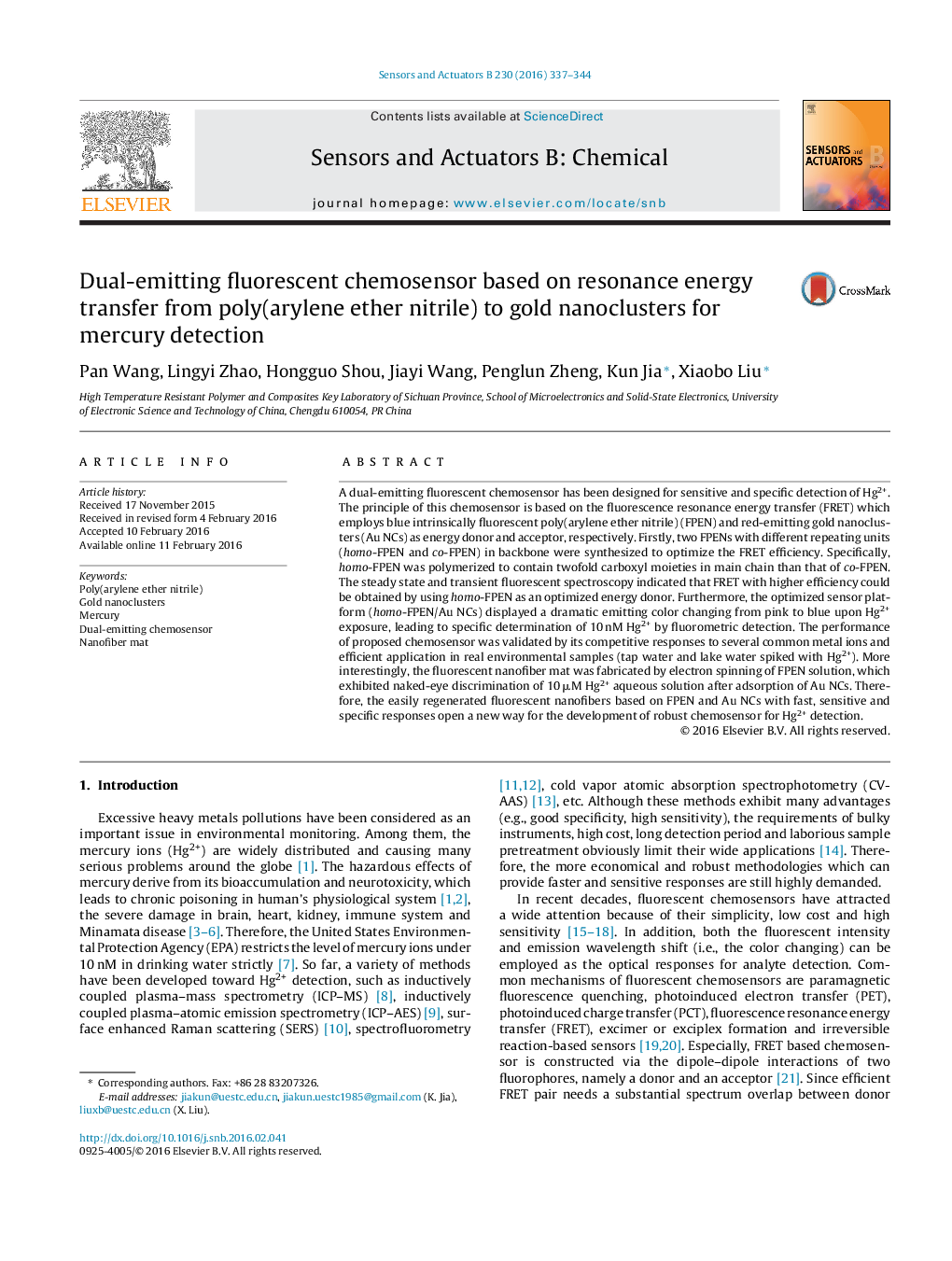| کد مقاله | کد نشریه | سال انتشار | مقاله انگلیسی | نسخه تمام متن |
|---|---|---|---|---|
| 741318 | 1462061 | 2016 | 8 صفحه PDF | دانلود رایگان |
• A dual-emitting chemosensor for Hg2+ was designed by FRET-based FPEN/Au NCs.
• Effects of polymer chain structure on FRET efficiency have been investigated.
• A limit of detection of 10 nM toward Hg2+ was obtained under optimized condition.
• Reusable nanofiber mat of FPEN/Au NCs was fabricated for fast detection of Hg2+.
A dual-emitting fluorescent chemosensor has been designed for sensitive and specific detection of Hg2+. The principle of this chemosensor is based on the fluorescence resonance energy transfer (FRET) which employs blue intrinsically fluorescent poly(arylene ether nitrile) (FPEN) and red-emitting gold nanoclusters (Au NCs) as energy donor and acceptor, respectively. Firstly, two FPENs with different repeating units (homo-FPEN and co-FPEN) in backbone were synthesized to optimize the FRET efficiency. Specifically, homo-FPEN was polymerized to contain twofold carboxyl moieties in main chain than that of co-FPEN. The steady state and transient fluorescent spectroscopy indicated that FRET with higher efficiency could be obtained by using homo-FPEN as an optimized energy donor. Furthermore, the optimized sensor platform (homo-FPEN/Au NCs) displayed a dramatic emitting color changing from pink to blue upon Hg2+ exposure, leading to specific determination of 10 nM Hg2+ by fluorometric detection. The performance of proposed chemosensor was validated by its competitive responses to several common metal ions and efficient application in real environmental samples (tap water and lake water spiked with Hg2+). More interestingly, the fluorescent nanofiber mat was fabricated by electron spinning of FPEN solution, which exhibited naked-eye discrimination of 10 μM Hg2+ aqueous solution after adsorption of Au NCs. Therefore, the easily regenerated fluorescent nanofibers based on FPEN and Au NCs with fast, sensitive and specific responses open a new way for the development of robust chemosensor for Hg2+ detection.
Figure optionsDownload as PowerPoint slide
Journal: Sensors and Actuators B: Chemical - Volume 230, July 2016, Pages 337–344
